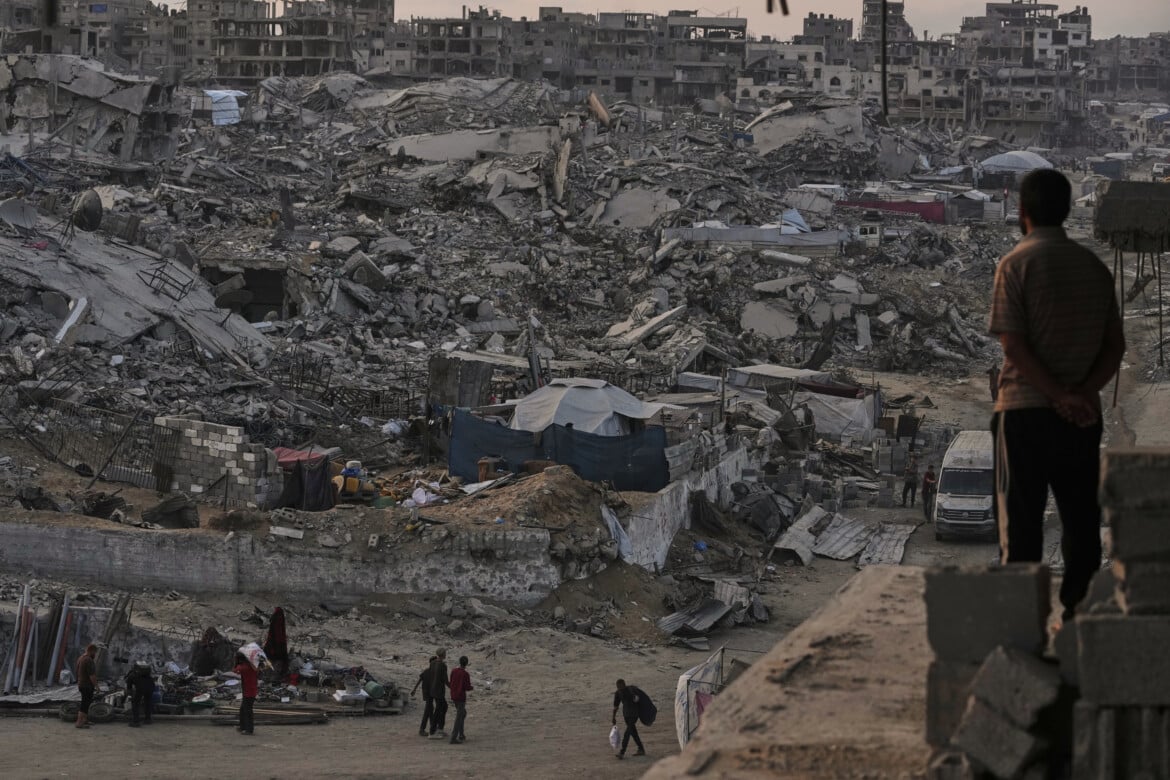Analysis
Palestine’s second Nakba
What happened after 1947 resembles what is happening now, in both Gaza and the West Bank.

The UN resolution pushed by the United States gives its seal of approval to the second Nakba (catastrophe) for the Palestinians. It effectively cancels the “two peoples, two states” formula, leaving in its place a very vague “path toward Palestinian self-determination,” a meaningless formula.
What it does is enshrine, after the Hamas massacre of October 7, the genocide of a people, entrusted into the hands of Israel’s military, with Trump's political stamp of approval and our consent. Unless, that is, one chooses to believe that a multinational contingent and the disarmament of Hamas are of such overriding importance as to overlook all that. All meant to throw dust in the eyes of an international community that seems eager to be blinded and look the other way.
Let us look at the first Palestinian catastrophe, because it paves the way for the second, the one currently underway. The 1947 UN resolution divided Palestine into two states, but the Jewish state was allotted 56% of the land, even though the Palestinian Arab population was double the size of the Jewish population. No one could accept a solution where half the territory was being ceded to a movement that wasn’t even from the region.
The commonplace narrative says the Arabs rejected this resolution. In reality, no one ever asked the Palestinians, living under the British Mandate, for their view. Then as now, the principle of self-determination was thrown into the trash. Today, the notion is being formally resurrected in this latest resolution with the full knowledge that it will never be exercised. Israel and its Prime Minister Netanyahu have been clear: there will never be a Palestinian state.
The Pax Trumpiana, imposed after the Israeli attack on Doha on September 9, saves Netanyahu’s skin, and is not intended to safeguard Palestinian lives but American interests, as demonstrated by the White House visit of Saudi Prince Mohammed bin Salman – the man who had journalist Jamal Khashoggi dismembered in the Saudi consulate in Istanbul – eager to purchase the U.S.’s F-35s.
What happened after 1947 resembles what is happening now, in both Gaza and the West Bank. In 1948, Zionist militias carried out the ethnic cleansing of Palestine, destroying towns and villages and immediately expelling more than 250,000 Palestinians. Today, Israel occupies over 50% of the Strip, and in the West Bank, radical Zionist militias, supported by the army, are devastating the Occupied Territories, preparing for the final blow: splitting the West Bank in two and preventing any territorial continuity for the Palestinians. Annexation is only a matter of time.
According to documents from the period brought to light by Israeli historians like Ilan Pappé, the first catastrophe was meticulously organized. By the end of the British Mandate on May 15, 1948 – the day of the first Nakba, celebrated by Israel as its Independence Day—hundreds of thousands of Palestinians had been forced to abandon their homes and land, never to return (back then, Jordan occupied the West Bank and East Jerusalem, while Egypt occupied Gaza). Everyone knew what was happening, but just like today, no one did anything. Israel took 78% of the Mandate territory, and 800,000 Palestinians became victims of ethnic cleansing.
Precedents tell us exactly how much Israel cares about UN resolutions. The UN ruled that refugees should return to their homes and that Jerusalem should be placed under international control. None of this ever happened, and nothing today suggests Israel will allow a Palestinian return. As il manifesto has reported, Israel’s plan is precisely the opposite: to proceed, by any means possible, with their deportation (see the articles by Michele Giorgio on Sunday and Wahid Tamimi on Tuesday).
It is interesting to note another parallel between the past and the present regarding the role of the United States. This is effectively highlighted by historian Ilan Pappé in his recent book, Israel on the Brink: And the Eight Revolutions that Could Lead to Decolonization and Coexistence (Beacon Press, 2025). The Six-Day War of 1967, in which Tel Aviv occupied the West Bank, Gaza, and the Syrian Golan Heights, drastically changed the peace process. That process became an American monopoly. The U.S., under pressure from a pro-Israel Congress, Pappé writes, froze out anyone else in the region or the world who wanted to mediate the conflict.
For this reason, the peace processes – including those leading to the 1993 Oslo Accords – turned into a tragic farce. The Palestinians had their hopes crushed and the international community was turned into a laughing stock, while Israel's sole objective was to buy time, normalize the occupation, and steal more territory through settlements. The UN resolution voted on Tuesday repeats the same pattern, just with a few minor changes to make it more palatable to the international community and the Europeans.
That is why believing in the U.S. and Trump nowadays is like believing in the Brothers Grimm's Pied Piper. Israel likes the resolution (feeling, as usual, legibus solutus – not bound by any laws), and so does the Palestinian Authority, because it promises to deal a blow to its rival, Hamas. This is a familiar-sounding script, hastily rewritten for a movie that’s nothing we haven’t seen before. And everyone knows the ending.
Originally published at https://ilmanifesto.it/la-seconda-nakba-dei-palestinesi on 2025-11-19
